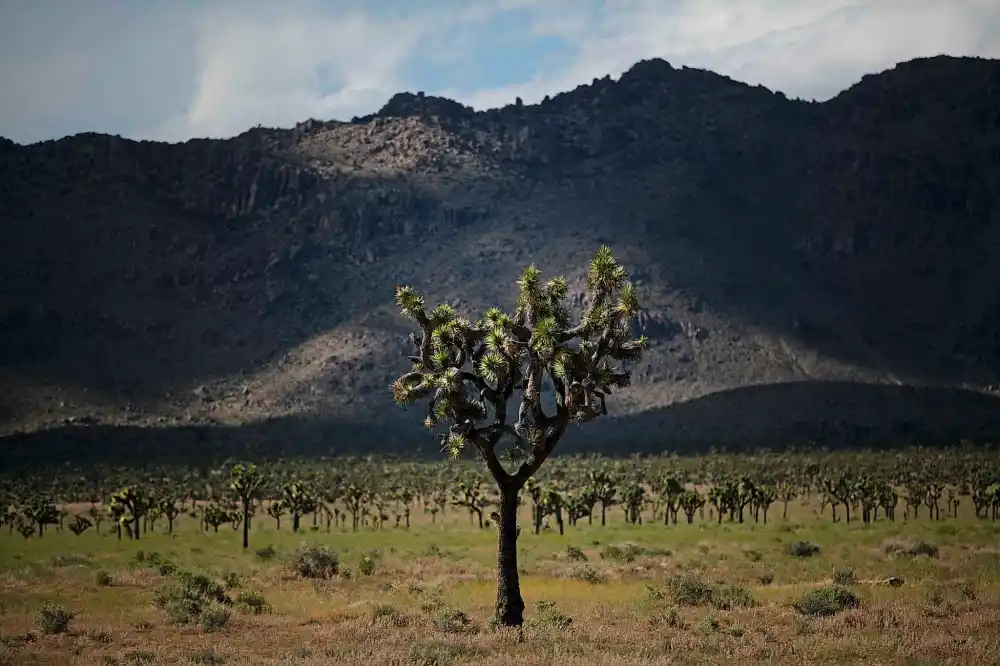The California Department of Fish and Wildlife has released a new plan to protect the state’s iconic Joshua trees, which are imperiled by wildfires, human development and climate change
The California Department of Fish and Wildlife has unveiled a draft plan to safeguard the state’s iconic Joshua trees, which are increasingly threatened by wildfires, human development, and climate change.
The 294-page proposal outlines measures to reduce harmful impacts, such as overgrazing, pesticide use, and off-road vehicle activity. It also includes strategies for relocating trees affected by development and protecting lands where the species could adapt to a hotter, drier future.
“This is a comprehensive roadmap for giving the western Joshua tree a fighting chance in the tough decades ahead,” said Brendan Cummings, conservation director at the Center for Biological Diversity, which initiated a 2019 petition to list the species as threatened under California’s Endangered Species Act.
The plan fulfills the requirements of the Western Joshua Tree Conservation Act, the state’s first law to address a species’ vulnerability to climate change. It prohibits the removal, damage, or killing of Joshua trees without a state permit and prioritizes areas for conservation based on tree density, health, and low risk of threats like wildfires and invasive species.
Key goals include identifying critical habitats by December 2025 and permanently protecting 70% of those areas by 2033. The plan also emphasizes wildfire prevention, habitat rehabilitation, and measures to control invasive species while replanting lost trees and native vegetation.
However, the plan acknowledges that its success hinges on broader efforts to curb greenhouse gas emissions. Without significant reductions in emissions from fossil fuels, climate change could devastate the Joshua tree’s remaining habitat.
“If we manage to follow a moderate emissions path, combined with this plan’s actions, there’s a strong chance to save the species,” Cummings said.
The draft plan now awaits approval from the California Fish and Game Commission.
